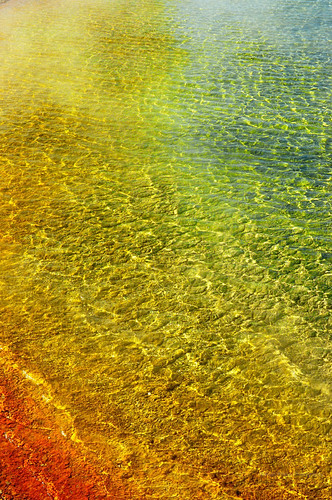 Have you ever wondered how we go about distinguishing color? Have you ever considered why we call a color by a certain name? The world we live in is saturated with color. All throughout the day our eyes work to distinguish the various hues of color we come in contact with.
Have you ever wondered how we go about distinguishing color? Have you ever considered why we call a color by a certain name? The world we live in is saturated with color. All throughout the day our eyes work to distinguish the various hues of color we come in contact with.
The human eye can distinguish over one- million colors. Most of us are familiar with basic color classes,
- Achromatic Color terms: Black, gray, and white
- Primary Color terms: Red, blue and yellow
- Secondary Color terms: Brown, orange, green, and purple
However, these eleven color terms only make up a small percentage of the colors we humans are able to see and identify. Is there any system we can use to name and organize the million plus colors that don’t automatically fall into the basic color classes?
In the 1930’s and 1940’s the British Color Council attempted to create a structure for naming colors. What they came up with is viewed by some as slightly confusing. For example, the British Color Council chose to use terms such as squirrel and bee eater blue to name colors. What colors come to mind when you read these terms? Do you think that others would agree with you or do you believe they might interpret the terms differently?

Currently, there exists a more scientific structure of naming colors. A set of 267 colors exists that are named, or described, using familiar color language. For example, this scientific method combines words such as, light, grayish and red to create a name for a color that we all might be able to identify easily in our minds. Yet, a set of 267 color names is still only a small percentage of the colors our eyes can see distinctively. Is it possible to create a more extensive set of color names that can be collectively agreed upon?
Think about the word you might use instead of light yellowish brown. Did you come up with words like tan or khaki?
Now consider how you would scientifically define some commonly used color names. Start with the color name puce. Does purplish brown work? What about the color name ocher? Did you come up with a phrase such as, dark yellow or dark golden yellow?
The process of naming over one million colors seems to be more complicated that it appears. Visit http://www.colormatters.com and take part in their Global Colors Survey to test you own color naming ability.
Images made available by Marian Kraus Photography Inc.
Be an Artist in 2 minutes with Segmation SegPlay® PC (see more details here)







Since when is green a “primary color”???
(second paragraph)
I was taught that there are 3 primary colors:
Red, Yellow, and Blue.